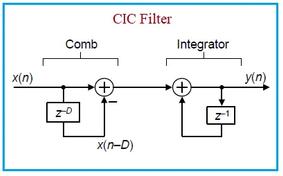10 Automotive Ethernet Interview Questions and Answers
Explore list of 10 interview questions and answers on Automotive Ethernet which will help interviewee pass the job interview for automotive engineer positions.
Showing 25 posts (Page 1 of 3)
Advertisement
Explore list of 10 interview questions and answers on Automotive Ethernet which will help interviewee pass the job interview for automotive engineer positions.
Explore key modulation and demodulation concepts with these 10 interview Questions and Answers, covering AM, FM, PSK, QAM, and more for comms roles.
VHDL source code for 16QAM modulation implementation. Includes entity and architecture declarations for QAM modulation.
Overview of the 751-3 railway communication system, including its features, technology, and limitations. It was used for track-to-train communication in Europe.

Explore the basics of ADSL systems, including setup, types (like ADSL2+), and standards, highlighting its role in providing high-speed internet.
Overview of aircraft radio frequencies used in aviation, including frequency ranges for LOS, VOR, GS, TCAS, DME, GPS, and more. Includes aviation frequency bands.

Ambient backscatter uses existing RF signals for communication, eliminating the need for batteries or dedicated RF sources. It operates by absorbing and reflecting RF signals.

Explore the diverse applications of Binary Phase Shift Keying (BPSK) modulation in satellite, wireless, and deep-space communication due to its simplicity and robustness.

Explore the diverse applications of QPSK modulation in cellular networks, satellite communication, Wi-Fi, and more. Learn how QPSK balances spectral efficiency and robustness for high-speed data transmission.

Learn about Automatic Call Distributors (ACDs): how they efficiently manage communications, route calls, and enhance customer service through automation and skill-based routing.
Explore leading vendors of Bit Error Rate (BER) test equipment, essential for assessing communication system performance.

Explore the differences between block and convolutional interleavers, focusing on their delay, memory usage, and applications in digital communication systems.

Explore Cascaded Integrated Comb (CIC) filters: their structure, applications in signal processing, design guidelines, and key advantages for real-time tasks.

Explore the distinctions between clock and carrier recovery in communication systems, highlighting their roles in signal synchronization and information retrieval.
Explore cloud telephony: its components like virtual PBX and VoIP, benefits such as cost-efficiency and scalability, and how it revolutionizes modern business communication.

Explore the fundamentals of communication systems in electronics, covering types, components, and applications in wireless and wired technologies.

Understand the distinctions between concentrators and multiplexers in communication systems. Learn how they differ in function and application for efficient data transmission.

Explore the benefits and drawbacks of Delta Modulation (DM), including its simplicity, redundancy removal, and limitations like slope overload and high bit rate.

Learn interference types like ISI, co-channel, and adjacent channel interference and explore differences between them. Umderstand their causes, effects, and mitigation techniques for improved communication systems.

Explore the structure, operation, advantages, and disadvantages of edge-emitting LEDs, commonly used in optical fiber communication systems.
A directory of EPABX vendors and manufacturers, with links to their websites. Includes NEC, Cisco, Panasonic, and others.

Explore FDMA, TDMA, and CDMA multiple access techniques, their principles, advantages, and applications in telecom networks, including examples and a detailed comparison.

Learn the basics of fiber optic communication, including components, benefits, optical transmitters/receivers and losses in the fiber optic system.

Simulate Frequency Modulation (FM) using Python. Includes FM modulation and demodulation Python code with explanations.

This article provides Python code for Frequency Shift Keying (FSK) modulation, generating an FSK modulated waveform from binary data.
Advertisement